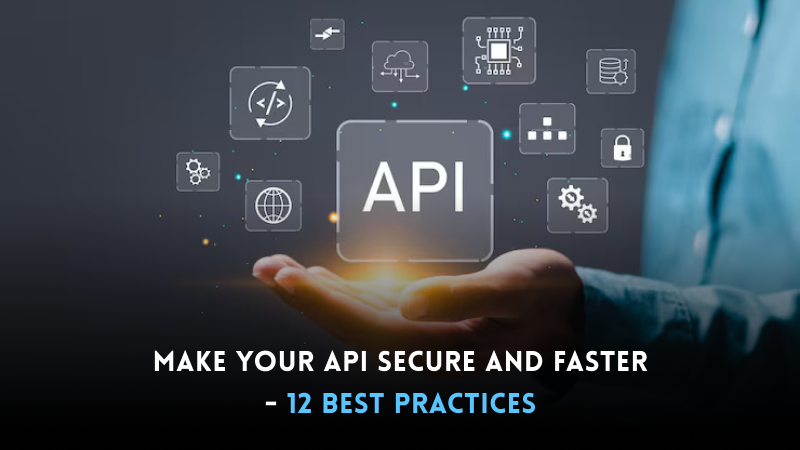APIs are the digital bridges that connect applications, services, and systems. They are at the core of modern apps, from mobile banking to e-commerce platforms. However, APIs are also prime targets for attackers because they expose sensitive data and services. Thus, ensuring API security is not optional—it’s a necessity. At the same time, APIs must also perform well to provide seamless user experiences.
In this blog, we’ll take a deep dive into API Security best practices and touch upon strategies to keep APIs fast and reliable.
Securing Your API – Best Practices Explained
APIs are the digital bridges that connect applications, services, and systems. They are at the core of modern apps, from mobile banking to e-commerce platforms. However, APIs are also prime targets for attackers because they expose sensitive data and services. Thus, ensuring API security is not optional—it’s a necessity. At the same time, APIs must also perform well to provide seamless user experiences.
In this blog, we’ll take a deep dive into API Security best practices and touch upon strategies to keep APIs fast and reliable.
Securing Your API – Best Practices Explained
1. Always Use HTTPS
All API communication should be over HTTPS (TLS/SSL). This prevents sensitive data such as login credentials, tokens, or payment details from being exposed in plaintext.
Without HTTPS, Attackers can intercept requests and steal credentials.
With HTTPS, Data is encrypted, ensuring confidentiality and integrity.
Pro Tip: Use modern TLS versions (TLS 1.2 or higher) and regularly update certificates.
2. Implement OAuth2 for Authentication & Authorization
OAuth2 is the industry standard for secure delegated access. Instead of sharing passwords, users or applications receive access tokens with defined permissions.
Example: A photo-editing app can request permission only to access your photos from Google Drive, not your entire account.
Benefits: Token-based, limited lifetime, revocable, and granular.
Pro Tip: Use short-lived tokens with refresh tokens for added security.
3. Enable WebAuthn for Passwordless Security
WebAuthn allows authentication using biometrics (fingerprint, face scan) or hardware tokens (like YubiKeys). This reduces reliance on weak or reused passwords.
Protects against Phishing, credential stuffing, and brute-force attacks.
Pro Tip: Combine WebAuthn with OAuth2 for a strong multi-factor authentication setup.
4. Use Leveled API Keys
Not all API keys should be equal. Assign scoped keys based on role:
Read-only: For fetching data.
Write access: For modifying data.
Admin: For sensitive operations.
This limits the damage if a key is leaked.
Pro Tip: Rotate API keys regularly and monitor their usage.
5. Enforce Fine-Grained Authorization
Authentication (who you are) must be followed by Authorization (what you can do).
Example: A user can view their profile but not modify another user’s details.
Role-based access control (RBAC) or Attribute-based access control (ABAC) is recommended.
Pro Tip: Deny by default and only allow explicitly permitted actions.
6. Apply Rate Limiting & Throttling
Attackers often abuse APIs by sending massive requests (DoS/DDoS attacks or brute force).
Solution: Restrict requests based on IP, user account, or API key.
Example: Limit login attempts to 5 per minute.
Pro Tip: Use exponential backoff strategies instead of just blocking.
7. API Versioning for Stability & Security
APIs evolve, but breaking changes can expose vulnerabilities.
Example: /v1/users vs /users.
Benefits: Controlled rollout, deprecated endpoints can be monitored before shutdown.
Pro Tip: Never remove old versions without notifying clients.
8. Use Allowlist Instead of Open Access
Restrict access to trusted clients, IPs, or networks.
Example: Internal APIs should only be accessible from internal networks.
Pro Tip: Combine allowlists with authentication tokens for layered defense.
9. Follow OWASP API Security Guidelines
The OWASP API Security Top 10 lists the most common threats:
Broken Authentication
Excessive Data Exposure
Injection Attacks
Security Misconfigurations
Mass Assignment, etc.
Pro Tip: Regularly audit your APIs against these risks.
10. Centralize Security with API Gateways
API gateways act as a gatekeeper:
Manage authentication & authorization.
Enforce policies (rate limiting, logging, transformations).
Protect backend services from direct exposure.
Pro Tip: Tools like Kong, Apigee, or AWS API Gateway provide enterprise-grade features.
11. Secure Error Handling
Errors can unintentionally expose sensitive system details.
✅ Good: “Invalid credentials. Please try again.”
❌ Bad: “NullPointerException at line 45 in LoginController.java”
Pro Tip: Log detailed errors internally, but expose safe messages externally.
12. Validate & Sanitize All Inputs
- APIs are vulnerable to SQL Injection, XSS, and other attacks if inputs aren’t validated.
- Always validate input types, length, and format.
- Reject malformed requests early at the API gateway.
Pro Tip: Use JSON schema validation and sanitize user-generated data.
Optimizing API Performance (Brief Overview)
While security is critical, performance cannot be ignored:
Caching: Store frequent responses.
Database Optimization: Use indexes and query tuning.
Load Balancing: Distribute traffic.
Compression: Reduce response payloads.
Pagination: Avoid overloading clients with too much data.
Async Processing: Offload heavy tasks.
Final Thoughts
A secure API protects your data, while a fast API delights your users. To stay ahead:
Always prioritize security first, guided by industry standards like OAuth2, OWASP, and HTTPS.
Then focus on performance optimizations like caching, load balancing, and query tuning.
When you combine both, you build APIs that are not only robust but also scalable and user-friendly. At SparkSupport, as a trusted IT offshore service provider, we help businesses design, secure, and optimize APIs that power seamless digital experiences.



